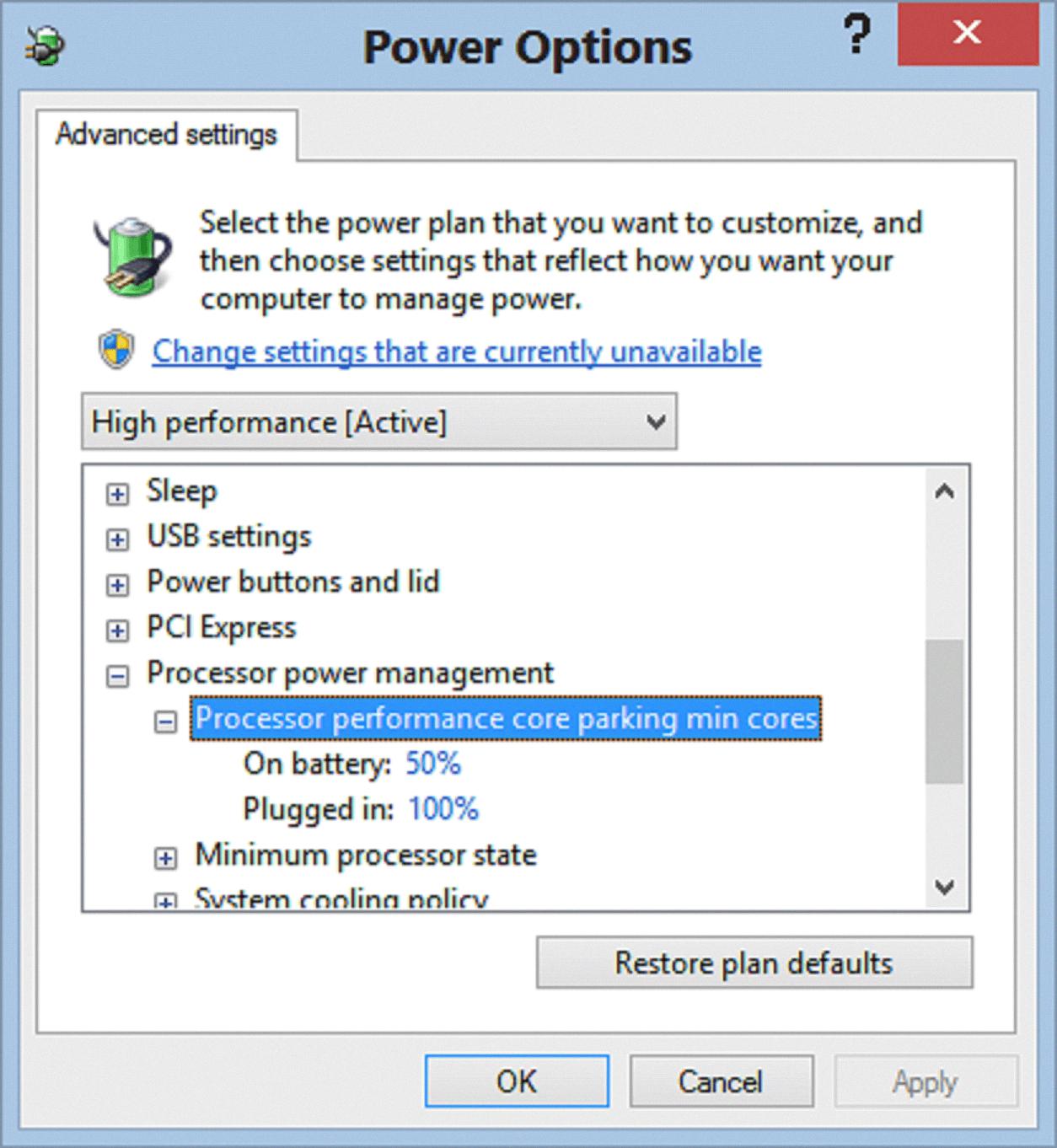Core parking is a feature that dynamically selects a set of processors that should stay idle and not run any threads based on the current power policy and their recent utilization. This feature is designed to decrease energy consumption and therefore reduce heat and power usage.
While core parking can be beneficial for energy savings, there are some side effects that you should be aware of. Disabling core parking is not going to crash your computer or damage your CPU, but it can have an immediate impact on your system’s performance.
When you disable core parking, all cores are active at all times, meaning task splitting between cores is better. This can result in a noticeable increase in performance. Additionally, if Windows decides to switch jobs between cores, it won’t be switched to a core that’s ‘parked’ (lower power consumption, lower performance).
It’s important to note that disabling core parking may increase power consumption and heat output, which can be a concern for laptops or other portable devices. Additionally, disabling core parking may not always result in a significant increase in performance, depending on the specific system and workload.
If you decide to disable core parking, there are a few methods to do so. One option is to use the Windows Registry Editor to modify power settings. Another option is to use third-party software designed to manage core parking.
Core parking is a feature that can be useful for energy savings, but disabling it can result in a noticeable increase in performance. However, it’s important to weigh the benefits and drawbacks of disabling core parking, as it may not always be necessary or appropriate for every system or workload.
Understanding Core Parking
Core parking is a functionality that identifies a specific group of processors that should remain inactive and not execute any threads based on the current power policy and their recent usage. The purpose of this feature is to minimize energy consumption, which leads to a reduction in heat and power usage. Core parking is particularly useful in situations where the system is not operating at full capacity, such as during low-intensity workloads or idle periods. By enabling core parking, the system can conserve energy and resources, which can result in longer battery life and reduced operating costs. Some of the benefits of core parking include improved energy efficiency, reduced system temperatures, and increased system lifespan.

The Impact of Core Parking on Gaming Performance
Core parking is a feature in Windows operating systems that is designed to conserve power by turning off unused CPU cores. While this feature can be useful in certain situations, it is generally not recommended for gaming.
When gaming, you want your CPU to be running at full capacity to ensure smooth gameplay and quick response times. Core parking can cause delays in processing power, resulting in lower FPS (frames per second) and increased input lag.
Furthermore, core parking can cause stuttering and freezing in games that rely heavily on CPU performance, such as strategy games and simulations. This is because the parked cores may not be able to handle sudden spikes in processing demands, leading to drops in performance.
Core parking is not recommended for gaming as it can negatively impact performance and cause issues such as stuttering and freezing. Disabling core parking can help ensure your CPU is running at full capacity for optimal gaming experience.
Does Core Parking Impact System Performance?
Core Parking is a feature of the Windows operating system that allows it to conserve power by shutting down inactive CPU cores. However, this feature may have an impact on the overall performance of the system. Disabling Core Parking can lead to an immediate improvement in performance as it ensures that all cores are active at all times. This means that task splitting between cores is better, resulting in a noticeable increase in performance. With Core Parking disabled, Windows will not switch jobs between parked cores, which have lower power consumption and lower performance. Therefore, it is recommended to disable Core Parking if you want to optimize the performance of your system.
Conclusion
Core parking is a useful feature that can help reduce energy consumption and lower heat and power usage. However, disabling core parking can lead to better task splitting between cores, immediate performance increase, and the prevention of jobs being switched to parked cores. While there are some side effects to disabling core parking, such as increased power usage and potential cooling issues, it is generally safe to do so. As with any system modification, it is important to monitor the effects and adjust accordingly to ensure optimal performance and longevity of your computer.








